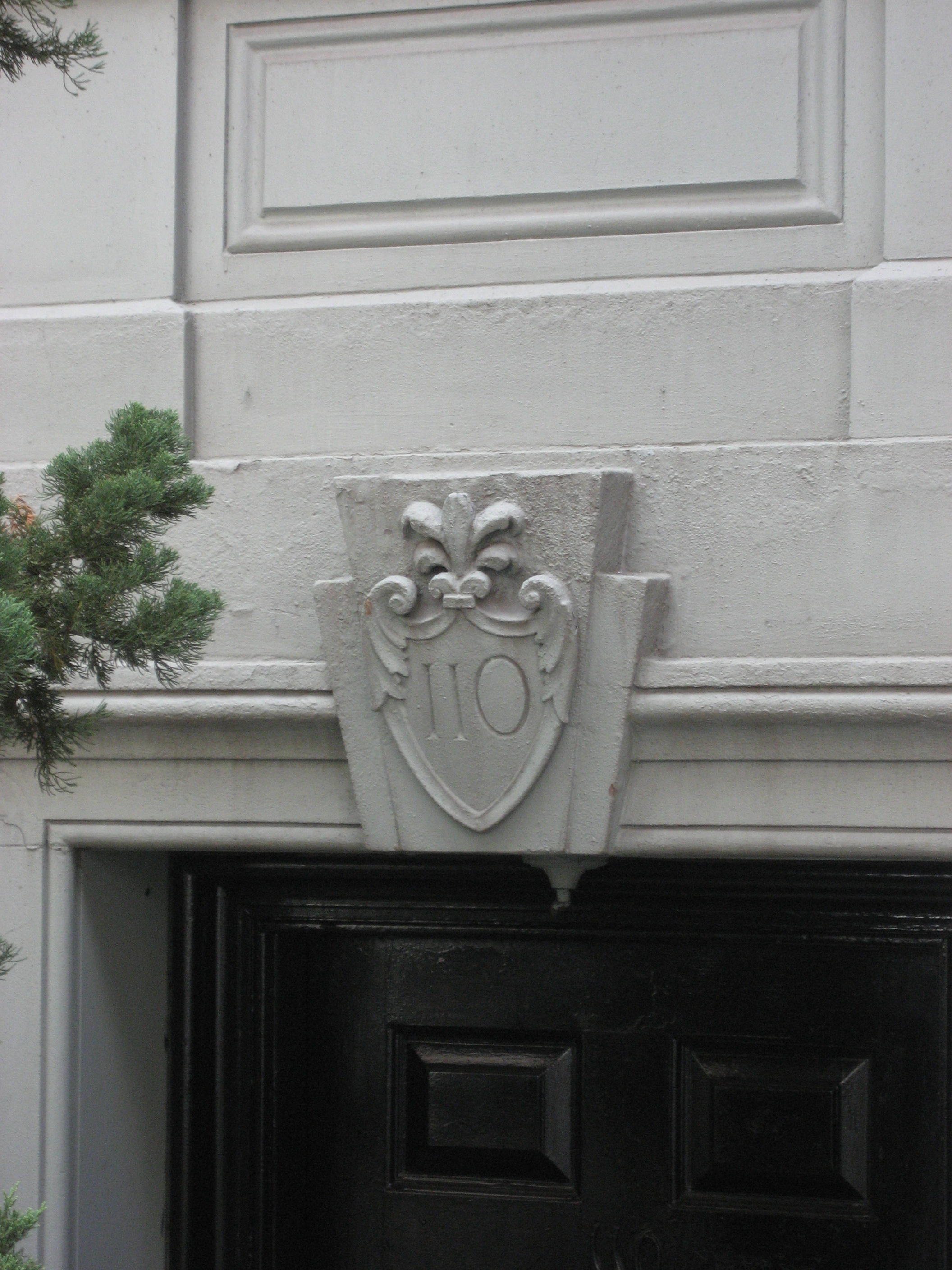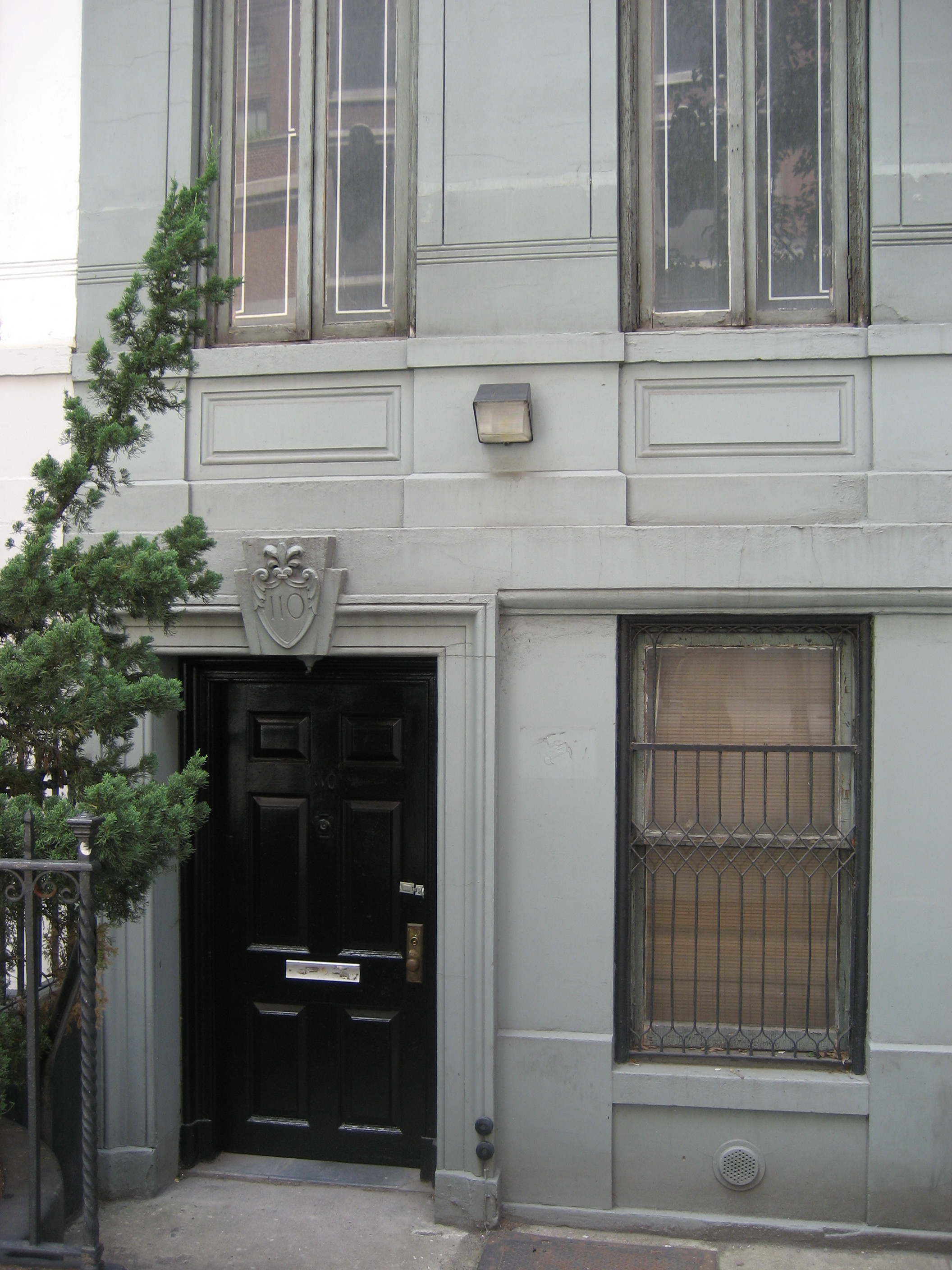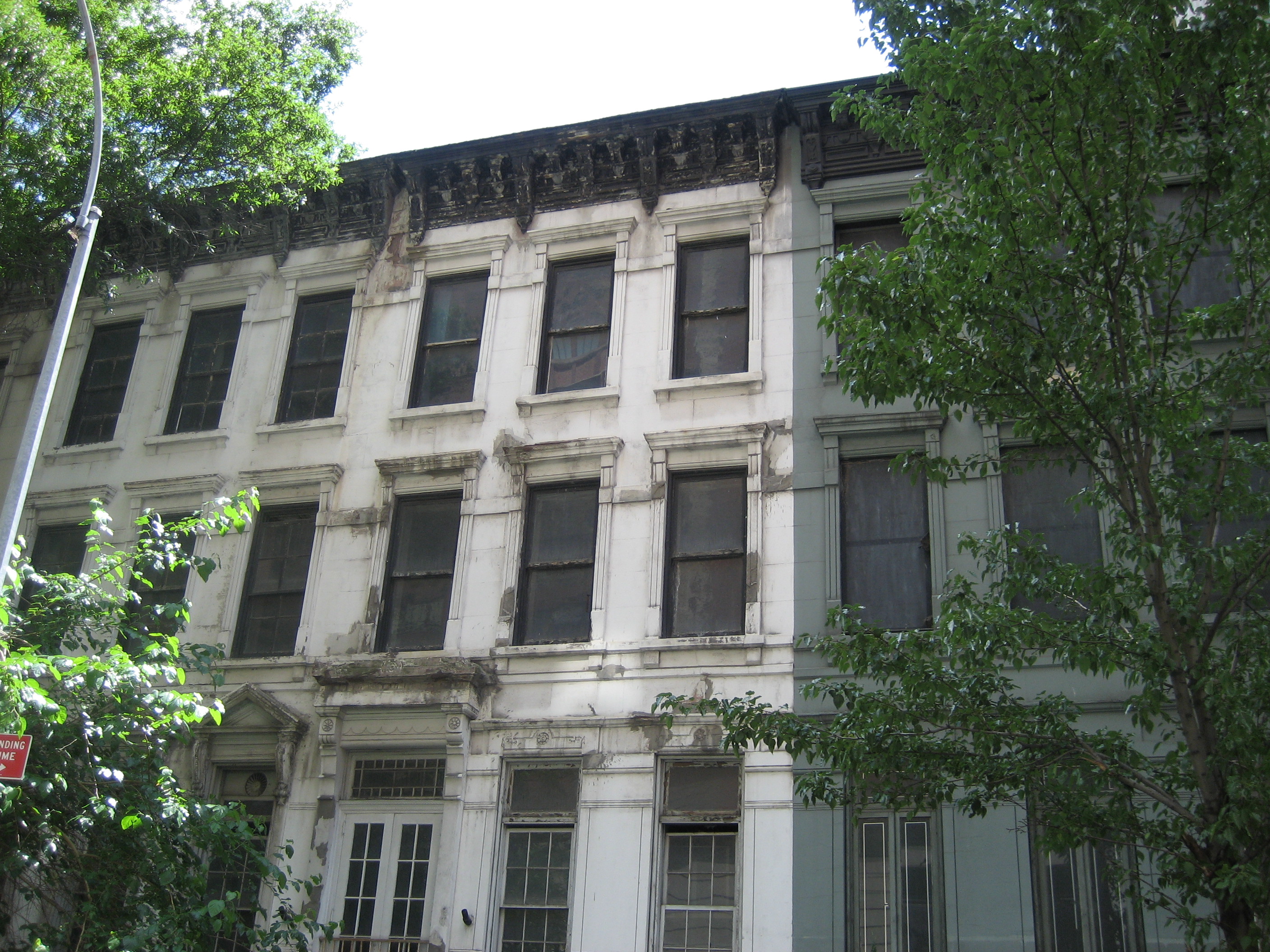The weather was reported to be clear and in the 50’s, although the air in Chicago was perpetually filled with soot from the burning of coal. It was said that approaching travelers to Chicago knew their destination was near by the black cloud looming on the horizon.
Florence Kelley was entering the Cook County Court House on that blustery March day in response to a legal action brought against her by husband, Lazare Wischnewetzky, who had come into court in Chicago and brought an action of habeas corpus to seek the custody of his three children: Nicholas, age six, called Ko, a diminuitive for the Russian Kolya, Margaret, age four and John, age two.
Habeas corpus proceedings were brought before the Honorable Judge Frank Baker in his courtroom on that blustery March 24th and 25th, these proceedings being a matter of public record and reported in the official court records as well as in The Chicago Tribune [1][2] and The Chicago Inter-Ocean.
The bringing of a writ of habeas corpus is a civil proceeding dating from Charles II, long before Elizabeth I and Henry VIII and Edward, all Plantagenets, in England.
The writ, called The Great Writ because of its power to challenge an illegal detention and order the release of those confined and sentenced to death by tyrants and kings, the writ has had a long, illustrious history which continues to this day with respect to those wrongfully convicted and sitting on death row. The Great Writ, just a few words, a Writ among other common law writs, demands that the bodies be given up, the ‘habeas corpus' part, because they are being held in violation of law and the constitution.
In England, which has never had a written constitution, the Great Writ was brought on behalf of political prisoners of the King, often held in the Tower of London before execution, alleging that the prisoner was being confined without legal justification. In the United States the writ of habeas corpus is enshrined in our written constitution. It was suspended by President Lincoln during the Civil War, and it has been suspended by a more recent president. Then lawyers argued that prisoners held in Guantanamo Base were detained in violation of the Constitution of the United States.
It came to be the practice for parents or others suing for custody of children in state court to use habeas corpus as the means to gain custody, and so it is still used occasionally today. In the action before Judge Frank Baker, Dr. Lazare Wischnewetzky asked that the bodies of Nicholas, six, and Margaret, four, and John Brown, later to be renamed John Bertram, be surrendered to him because they had been illegally removed from his custody when their mother, Florence Kelley, fled the family home in New York on a dark and long December night. It was the law that children presumptively belonged to the father, as Florence Kelley well knew, since a great deal of her legal research and advocacy was directed to improving the conditions for the many working children.
The legal action before the Honorable Judge Frank Baker was not an action for divorce. Neither Florence Kelley nor Lazare Wischnewetzky had been a resident of Illinois for a year which was a qualification for bringing a divorce action.
In New York where Lazare Wischnewetzky and Florence Kelley and their family had been living since returning from Zurich in 1886 the sole ground for a divorce at the time was adultery, whereas Illinois led other states in legally acceptable grounds for divorce which could be granted for incompatibility, non support, for cruelty, desertion, for drunkenness and for many other reasons. And in Chicago these rules were often interpreted liberally. In the West generally, desertion was a common ground for divorce, especially in the frontier states where the rule was that a notice was posted for a period of time and if the person was not found or did not return, divorce could be granted.
In court before Judge Frank Baker the petitioner was Dr. Lazare Wischnewetzky and the Respondent was Florence Kelley Wischnewetzky. The action was filed by Dr. Wischnewetzky’s lawyer from New York, and his witnesses were from New York. [read more] It was the last time she would be known by that name, although her legal right to her unmarried name was not granted until her divorce action in 1900. Florence Kelley would not be granted a divorce from Dr. Lazare Wischnewetzky until June, 1900.
The marriage between Florence Kelley and Lazare Wischnewetzky, he being a medical student at the time, took place in Zurich, Switzerland on June 1, 1884. The medical student Lazare Wischnewetzky first came calling on New Year’s day, 1884, Florence Kelley wrote her father, upon herself, her mother, Caroline, and younger brother, Albert, born in 1870, who were visiting Zurich for the holidays. He brought gifts, materials from a private library of rare books to which he had access. They had first met in a political-economic lecture course at the University of Zurich where Florence Kelley was a post graduate student in what would now be called the social sciences. Their language of communication would have been German, and perhaps some French, since Florence Kelley who spoke five languages did not know Russian, and Lazare Wischnewetzky did not know English then, and was slow to learn English when the family emigrated to New York.
Prior to coming to enroll in the University of Zurich Florence Kelley had been traveling in Europe with her older brother William Darrah Kelley, Jr., who would testify at the habeas corpus proceeding on the second day, March 25, 1892. Together the brother and sister visited London, Liverpool, Paris and in January of 1883 came to Avignon, in the south of France, where William experienced an episode of total, unexplained blindness, requiring his sister to feed him, sleep in his room at night, and take complete care of him. Florence Kelley’s close friend from Cornell, Dr. M Carey Thomas, came to visit in Avignon and offered an opinion privately to another that the young man’s ills were caused by dissipation and alcohol. She also commented on the grim conditions in Avignon.
Whatever the cause, the young man required uninterrupted care for weeks in the grim cold French winter where the southern mistral wind blew unceasingly, although later he seems to have made a complete recovery. Even the irrepressible Florence Kelley called it a lonely sojourn, with no one to talk to (in spite of her accomplished French), the locals thinking it odd that brother and sister, if that was what they were, would be traveling together and sharing the same bedroom.
This same Dr. M. Carey Thomas, Florence Kelley’s friend from Cornell University, had, when she visited in Avignon, just received a doctorate summa cum laude from the University of Zurich, the only university in Europe to admit women for graduate study, and she encouraged Florence Kelley to go to Zurich to continue her education. In spite of her excellent degree from Cornell University, Florence Kelley had been refused the opportunity to do graduate work first by the University of Pennsylvania and then by Oxford University. A Trustee of the University of Pennsylvania, a friend of the Congressman William Darrah Kelley, wrote her father that he hoped that he would never see the day when men and women sat in the same classroom and learned together.
And so she did go to Zurich and enroll there for graduate study, and it was there that she met Lazare Wischnewetzky, a medical student from Taganrog, Russia, a Black Sea port 400 miles east of Odessa, the part of Russia which sent so many to Chicago in the 1880’s and 1890’s. Although it was rarely mentioned by the Kelley family or others, he was Jewish. It was in Zurich that Florence Kelley began to translate into English Frederick Engels’ Die Lage de Arbeitenden Klass in England (The Condition of the Working Class in England, a labor which began a relationship with Engels lasting into her Chicago days.
The habeas corpus case had been assigned to Judge Frank Baker, Chancery Division, Circuit Court of Cook County. The Juvenile and Domestic Relations Court, the first such court of its kind founded in Chicago in 1899, was not yet in existence.
Judge Frank Baker came from a distinguished, highly educated family of public servants and lawyers.
Judge Frank Baker’s progenitors emigrated from Kent, England in 1639, settling in one of the original six towns of the New Haven colony, then moving to East Hampton, Long Island. Judge Baker’s ancestors served as judges, magistrates, representatives of Dukes, in elected and appointed positions. One of them, his great great great grandfather, perhaps, was Foreman of the first Grand jury in the province of New York at the first Court of the Assizes held in New York in 1665. His son was a member of the Council of the first English Governor of New York in 1665. That man’s son married a Huguenot, moved to Connecticut and became a merchant engaged in the West Indian trade, perhaps a euphemism for the slave trade.
Their son Samuel Baker was captured by Indians during the Revolutionary war and sold off to General Burgoyne’s camp for $12.00, where he remained as a mess boy on the General’s staff until the surrender to General Gates at Saratoga. The young man then went home, where he stayed just until he was 18 in 1781, whereupon he enlisted in the Revolutionary Army and saw considerable fighting. After the war he was the first nonnative settler in the Tioga Valley in Pennsylvania.
In 1794 this man was elected Assessor of the town of Bath, and held other government positions before being commissioned as the first Judge of the Court of Common Pleas in Steuben County, New York where he remained until 1817. The Court of Common Pleas being the court which heard Writs and other actions under the common law of England, as carried over to the colonies. That Judge Baker, the grandfather of the Judge Frank Baker hearing the habeas corpus petition involving the three children of Dr. Lazare Wischnewetzky and Florence Kelley Wischnewetzky, died in 1842.
The maternal grandfather of Judge Baker sitting in the Circuit Court of Cook County on March 24th and 25th of 1892, was a member of the state legislature of New York. The father of this same Judge Baker was a prosperous farmer whose desire it was to prepare his six sons for public service. Judge Baker, the son, responded to President Lincoln’s call for volunteers in the Union Army, served out his term, and then entered the Albany Law School in New York, having previously graduated from Ohio Wesleyan University.
This Judge Baker initially opened a law office in Tiffin, Ohio, where he served as a prosecuting attorney and had a general practice until 1873, when he set off for Chicago, becoming part of the great tidal wash of immigration of lawyers and others after the Great Fire of 1871. Perhaps it was the outpouring of sympathy and support for Chicago, as well as influx of cash associated with the building boom after the fire which drew people to the city. In 1887 that Judge Baker was elected Judge on the Democratic ticket, the party affiliations being the reverse of the present identifications. The Democrats were conservative and anti abolitionist before the Civil War. The Republicans were the party of the assassinated Lincoln. The Democrats controlled most Chicago politics. It was the Democrats who in the 1890’s split into various groups with socialist and progressive agendas, sometimes attracting reformers such as Florence Kelley’s colleague and Hull House regular, Henry Demarest Lloyd, whose family provided comfort and home to Florence Kelley’s children soon after her arrival in Chicago. Indeed, the three children, whose bodies were the subject of the habeas corpus proceeding, who, along with their nursemaid from New York, were staying with the family of Henry Demarest Lloyd and his wife Jesse Bross Lloyd at the time of the legal proceedings in Judge Baker’s courtroom.
This Judge Frank Baker with the notable colonial heritage and impeccable judicial credentials, was reelected in 1891, and again in 1897, allowing him to preside over two matters involving Florence Kelley: the March 24th and 25th habeas corpus proceeding, and her ex parte divorce proceeding in June of 1900. This same Judge Baker continued to distinguish himself with his opinions while on the Illinois appellate courts and was so widely respected that the Republicans also endorsed his judicial reelection. An excellent scholar, and a conscientious and kindly jurist, he never served on the Illinois Supreme Court.
Perhaps the overhanging black cloud of soot was temporarily rinsed clear by a recent rain for Florence Kelley Wischnewetzky as she made her way, probably by horse drawn cab, from Hull House, a Social Settlement at 335 South Halsted Street, as it identified itself, to the Cook County Courthouse, whose grand columned exterior promised more justice than may actually have been delivered in its dark, wood paneled courtrooms.
The Cook County courthouse was described by the British journalist William Stead, a frequent visitor and sometime resident at Hull House, whose book about Chicago received much attention.
“..the huge pile of masonry which reminds the visitor by its polished granite pillars and general massive and somber grandeur of the cathedrals and palaces of St. Petersburg. The City Hall and CourtHouse form one immense building in which all city and county business is transacted, both judicial and administrative. In this building, crammed with invaluable documents, the seat and the center of the whole civic machinery,” William Stead continues, “for want of any better accommodation, there were housed night after night through the month of December [of 1893] from one to two thousand of the most miserable men in Chicago….” [read more]
There is no description in the newspaper reports of what Florence Kelley wore to the habeas corpus proceeding when her husband summoned her into court on March 24th of 1892. The Chicago Tribune and other newspapers did report extensively on what women wore, and published many advertisements for cloaks, umbrellas, hats and shoes.
In 1893 these advertisements were elegant line drawings, just as the pictures of people in the news were drawings, because the technology did not exist to clearly print photographs in newspapers. The furs, cloaks, and beribboned dresses in these advertisements are testament to, and themselves the standard for, what a fashionable woman of means in Chicago would be wearing. Florence Kelley herself was never fashionable, and for most of her life had no money. And even if she had had money she would not have spent it on expensive clothes for herself. For those in the tenements, and others, keeping clothes clean and dry was a large practical problem. Women wore long skirts, and many layers of overlaid wrappings of cloth and fur, if they could afford it. Men wore tailored trousers and jackets. Boys wore knickers and everyone wore stockings. The pinafore seen in many photographs was a cotton apron designed to allow a girl or a woman to keep her dress clean.
The Chicago Tribune identifies the people in Judge Baker’s courtroom on March 24, 1892 as being New York people of prominence, referring to the Doctor as a physician and surgeon in New York. In fact Lazare Wischnewetzky was never licensed to practice medicine in New York or Pennsylvania, The Chicago Tribune refers to his wife as the daughter of the late Congressman from Pennsylvania, William Darrah Kelley, widely known as Pig Iron Kelley for his unflagging support for protectionist tariffs for American infant industry, especially for the steel manufacturers in Pennsylvania.
The two days of legal proceedings include testimony from witnesses from New York, as well as testimony from the Petitioner and Respondent, and background about Dr. Wischnewetzky’s plans for the first American Zander Mechanico-Therapeutic Institute, as well as direct testimony and affidavits about the conditions of family life in New York on East 76th Street.
At the end of the legal proceedings Dr. Lazare Wischnewetzky was not awarded custody of the children, in spite of his pleas and those of his business associate. Later he asked for custody of just the oldest child, Nicholas, that request was also denied. While Dr. Lazare Wischnewetzky did not give up this pursuit, he was never successful in being awarded custody of Florence Kelley’s three children, Nicholas, six in 1892, Margaret, four in 1892, and John two years old in 1892.
next: Spring - Summer 1892, Getting Ready to be Factory Inspector


